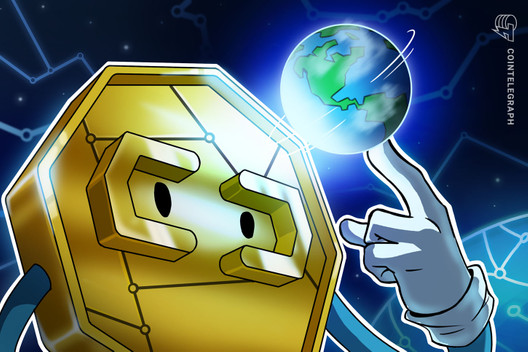United Nations Secretary-General António Guterres estimates trillions of U.S. dollars per annum is needed to achieve the 2030 Sustainable Development Goals. The question is: “Where would it come from?” Official development aid, philanthropy and public finances cannot suffice, which means the needle is moving toward private capital to fund sustainable development projects.
Related: The UN’s ‘decade of delivery’ needs blockchain to succeed
But the gap between financing and the environmental impact does not exude the confidence of private investors to fund development projects. India, a center of sustainability risks and innovative interventions, offers an example of this gap. Between 2014–2015 and 2018–19, corporate social responsibility, or CSR, spent by the approximately 1,100 listed Indian corporates grew at a rate of 16%, while India’s score on the United Nations Development Programme’s Human Development Index grew by roughly 1% compound annual growth rate, or CAGR. Ironically, most CSR spending by Indian companies goes to education and health — the very sectors the HDI index focuses on.
It is time for blockchain tech
Can blockchain technology be a workable solution? It can because development projects conduct measuring, reporting and verification, or MRV, processes measure the outcome and impact of projects. Most readers are aware that distributed ledger technology stores data batches in blocks on the network, and the need for independent verification from the network’s users makes the records transparent, secure, verifiable, and immutable. These are the very attributes by which blockchain can improve the MRV processes, thus improving data auditability and reducing misreporting/fraud of data. This can incentivize private capital to consider investing in this space.
Moreover, if we must identify the precise activity of a typical development project where blockchain technology can be leveraged, then it would collect and time-stamp project-level data for monitoring purposes. The challenge is many resource-crunched development projects, especially in developing countries, still collect field data by hand, which can lead to inaccuracies, mistakes and fraud. With a blockchain, such data can be collected and reported in a secure, transparent and verifiable manner.
What also adds adverse effects is the local institutions in the developing countries that implement such projects often lack the systems to ensure the data they report is verifiable. Weak regulations in such countries make it difficult to hold such local institutions to account. Add to this the distance between foreign investors and these local projects, and it becomes harder to stay on the same level.
Blockchain can reduce the data risks of local-level institutions, improve the validity of the data they report for impact, and instill confidence in foreign private donors/investors to fund such development projects.
Blockchain and MRV processes
What this implies is more financing flow can be committed to the local level. Back in 2017, the International Institute for Environment and Development estimated that only 10% of the $60 billion in public and private climate finance is directly committed to the local level, which is partly due to such perceived data risks. Using blockchain to improve MRV can facilitate greater access to capital for local-level institutions.
With blockchain enabling local projects to report verifiable performance as part of their MRV processes, local development institutions can gain a greater supply of capital. The Amazon in Brazil is an example. The Rainforest project uses blockchain and the Internet of Things to record and transfer data from electrical meters, robotic appliances and emission monitors on the environmental impact. Remote sensing satellites independently verify the status of patches, upon which blockchain smart contracts directly reward the farmers who preserve their rainforest patches. The outcome data is verifiable, and the exclusion of intermediaries while transferring incentives minimizes administrative costs and the siphoning of funds.
Blockchain-enabled MRV processes help disintermediate the intermediaries in a social or sustainability bond issuance, thus reducing issuance costs and making it possible for small enterprises to access the bond market or aggregate smaller assets into bonds. Already, leading Spanish bank BBVA uses blockchain to structure green bonds and loans.
As long as limitations such as internet capacity and technology literacy can be overcome, blockchain’s revolutionary role in improving the MRV processes around data can mobilize more private capital investments for development projects executed by local-level institutions in developing countries.
This article was co-authored by Sourajit Aiyer and Jae-Hoon Kwak.
The views, thoughts and opinions expressed here are the authors’ alone and do not necessarily reflect or represent the views and opinions of Cointelegraph.
Sourajit Aiyer is a consultant at South Asia Fast Track Sustainability Communications. Previously, he worked with traditional and sustainable finance organizations. He has written three books, over 160 articles for 60 publications, given over 30 guest-talks at various universities and conferences, and curated 20 webinars with over 50 international domain-experts.
Jae-Hoon Kwak is the CEO at Pan-Impact Korea, a company focusing on social impact via innovative technologies.









